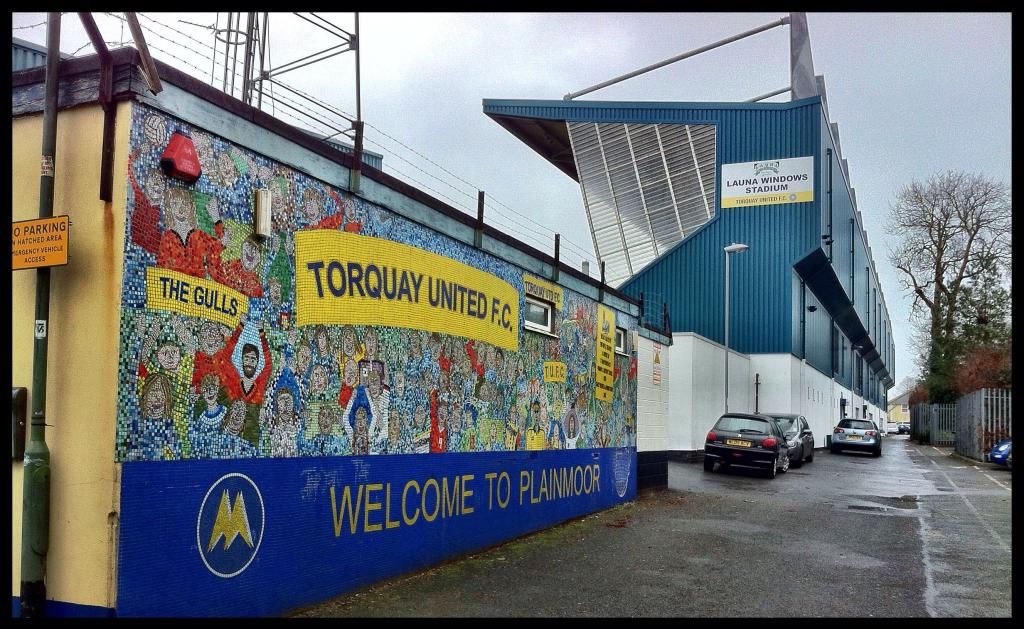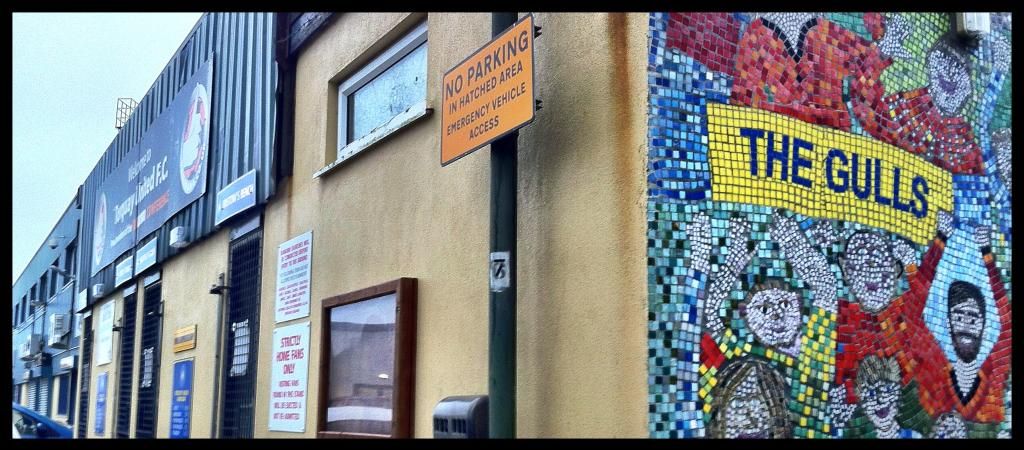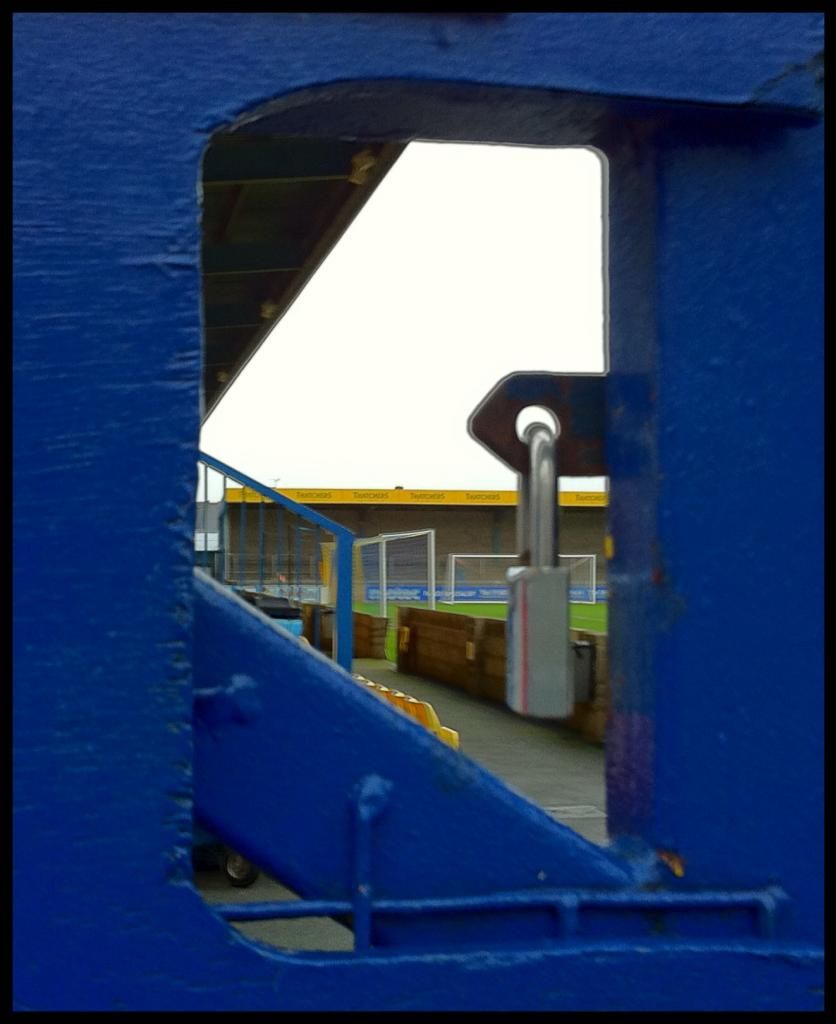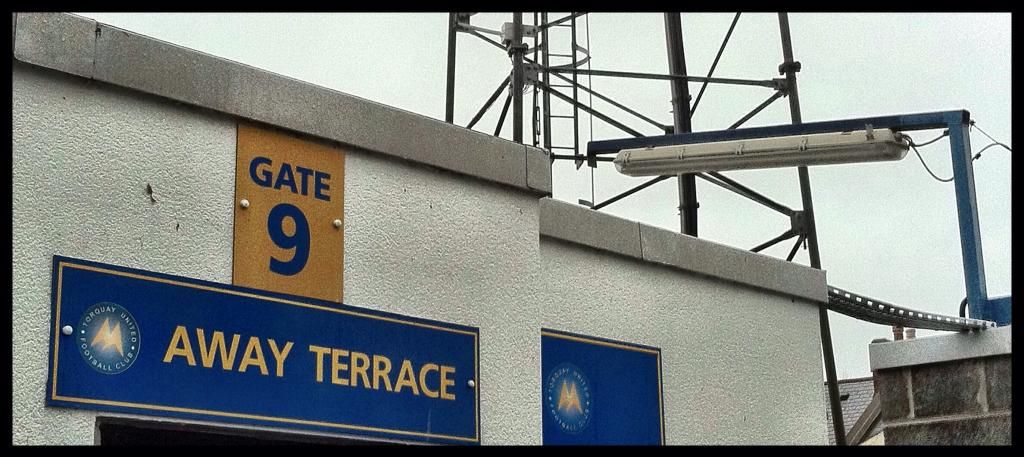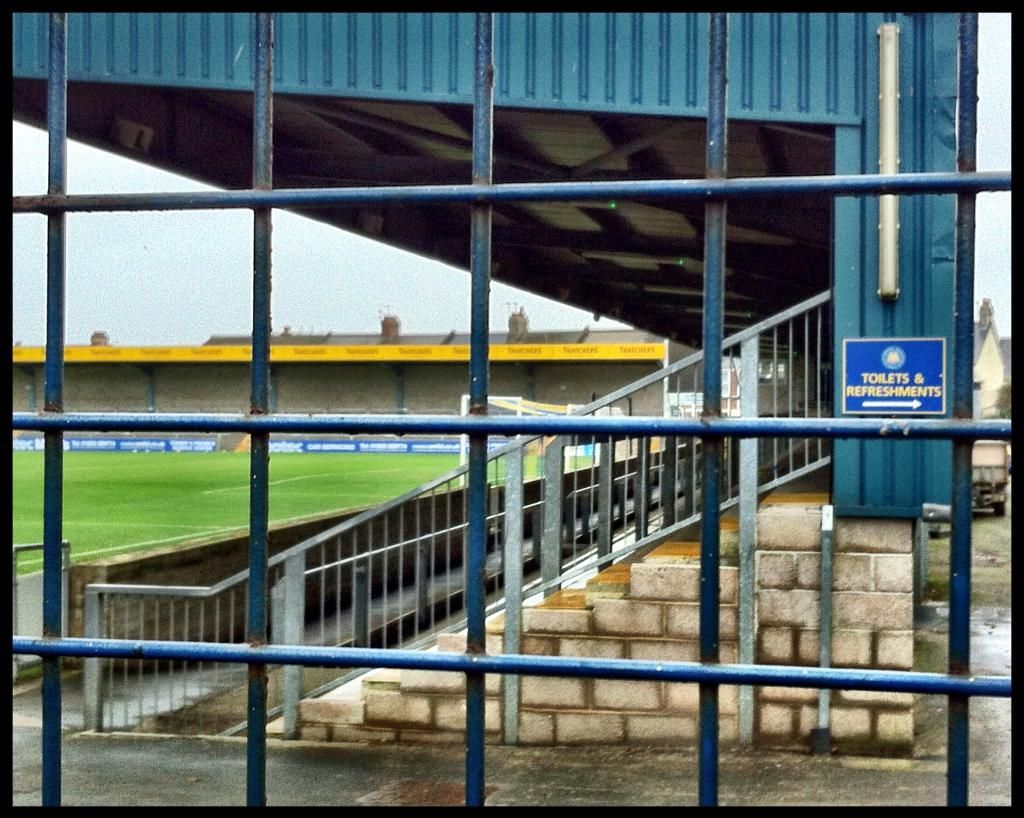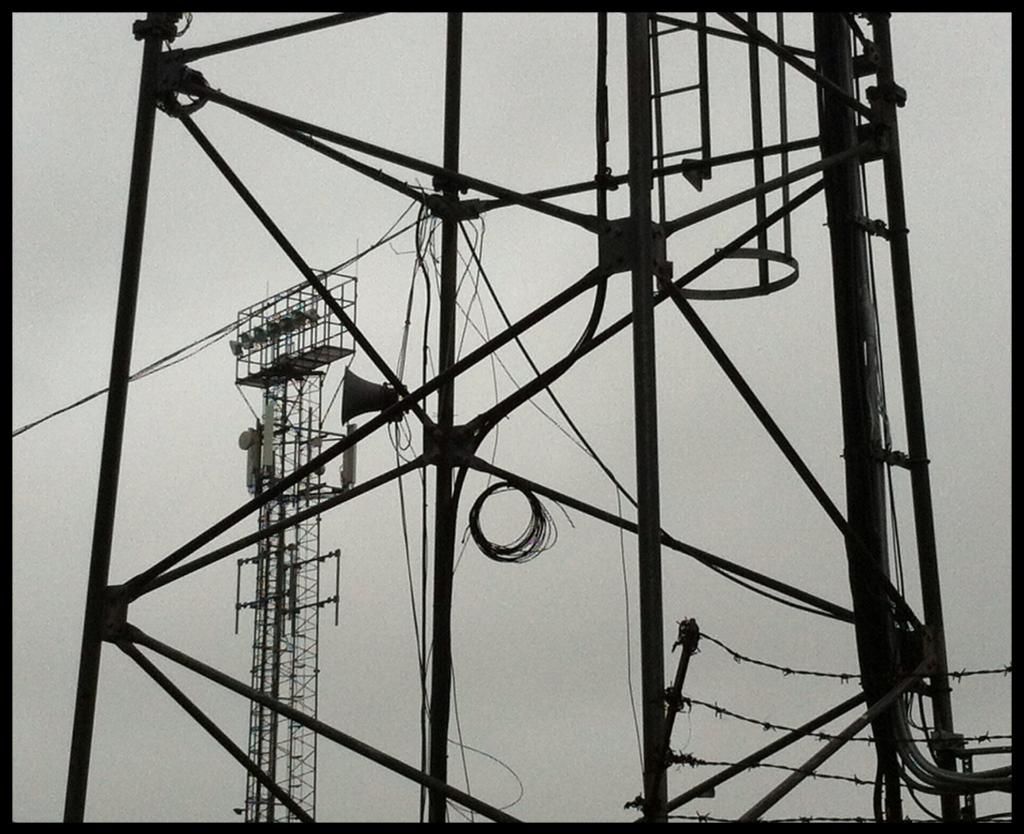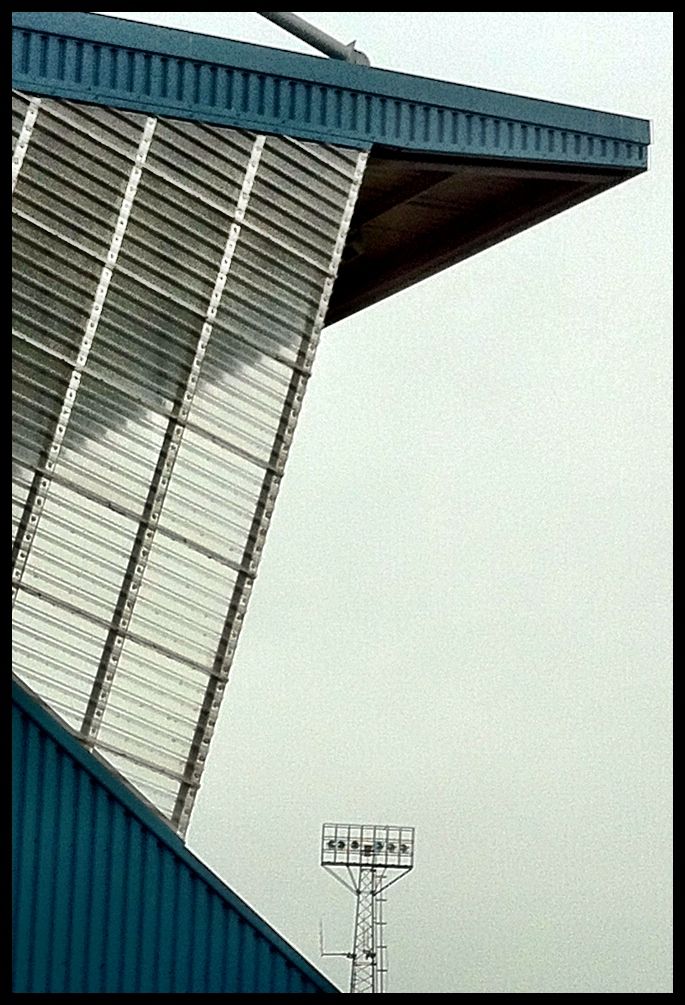Deleted
Deleted Member
Posts: 0
|
Post by Deleted on Dec 1, 2014 18:12:51 GMT
Had a look on street view, the semis either side of Parkhurst Road with the single storey bay, to be fair, do look Edwardian. Will see if I confirm that.... Ha! So it's not only me who has been looking at Street View recently. Jon mentions some of Babbacombe's homes: "Babbacombe had started at Walls Hill in 1903, moved to Petitor Lane in 1907 and down the hill to a ground opposite the Palk Arms pub in 1908. In 1910, a new company began work to build a golf course which included the area where the ground stood so Babbacombe were left homeless."Was Petitor Lane the previous name of what is now Petitor Road? Or somewhere else nearby? Jon and I have been studying old pictures of Babbacombe teams ahead of the museum exhibition. Identifying where they were taken is nigh on impossible. One set of trees looks very much like another. But a few of the houses are reminiscent of Petitor Road. I must take a look in person. Taking another glance at John Pike's other centenary history, I see there's a reference to golf continuing on Wall's Hill until well into the 1930s. This would have been long after the opening of Petitor. There were problems, apparently, with "vandals" on the greens; "youths playing football and cricket on the fairways and damaging the fine turf". Elsewhere in town, when asking various "what if?" questions, it's easy to come up with Torre Valley North as a possible alternative ground for Torquay United. I've an old map, published by the Torquay Times which still shows the area as the site of the Devon Rosery. "Torquay's chief attraction", no less, open daily and free to all. Over forty acres under cultivation; sixty conservatories and greenhouses. Not quite the place for scallywag footballers. |
|
Deleted
Deleted Member
Posts: 0
|
Post by Deleted on Dec 10, 2014 12:29:11 GMT
A photographic wander around the outside of Plainmoor to show how the ground looked on a gloomy afternoon in December 2014. Starting with the view from the Babbacombe end of the ground where the floodlights loom large. It's been said before that there's something wonderfully old-fashioned about the Plainmoor lights. They're just like most floodlights would have been when these new-fangled structures first started to appear over football grounds fifty or sixty years ago. All over the country this must have represented quite an impact upon the urban landscape. Were there letters of outrage in local papers throughout Britain? Or were floodlights welcomed as signs of post-war recovery and modernity? Certainly, for the football fan, they simply represented the eventual prospect of 3pm kick-offs throughout the winter and sensibly-timed evening games. Hardly of any of us now remembers Plainmoor without floodlights; they're entirely integral to our concept of the town's football ground. Nor is the scene along Warbro' Road too much different from when I saw my first match. The main change is the aspect of Bristow's Bench from the corner of Devons Road. It's easy to say the Bench is larger and sleeker than its predecessor. But, when you remember the hotchpotch of what was there before, it would surely be more accurate to use the term predecessors. And, in recent years too, there was that unsightly gap towards the Babbacombe end where those awful temporary cabins stood for rather longer than they should have done. This must have meant the relatively recent view from Devons Road was altogether emptier than now. The other feature of interest, and not one I've adequately recorded, is the retention of the perimeter wall running along the lane behind the houses on Warbro' Road. This is a reminder of the extent of the "old" Babbacombe end; its’ banked terracing stretching back to the wall itself. At the top of the terracing I have a memory of the wall being very low with a rather flimsy fence which, quite correctly, would not have met current safety standards. This mental image, I imagine, now dates from the 1970s when I last stood on the Babbacombe end in its "original" state. Beyond that I'm hazy. Putting the dimensions together from the present scene, the old Babbacombe end starts to appear far more expansive than I ever thought at the time. It was scruffy, it was basic but was it ever that big? Or is the present structure simply rather small? And what was the history of the downsizing? I seem to recall the tale of Dave Webb removing part of the terracing to create space for car boot sales and other activities. But how was it all left after the 1980s? Fences, cramped, messy. That’s my recall. But not a place to duly concern us. Not, that is, until we were to stand there for that FA Cup game against Birmingham. 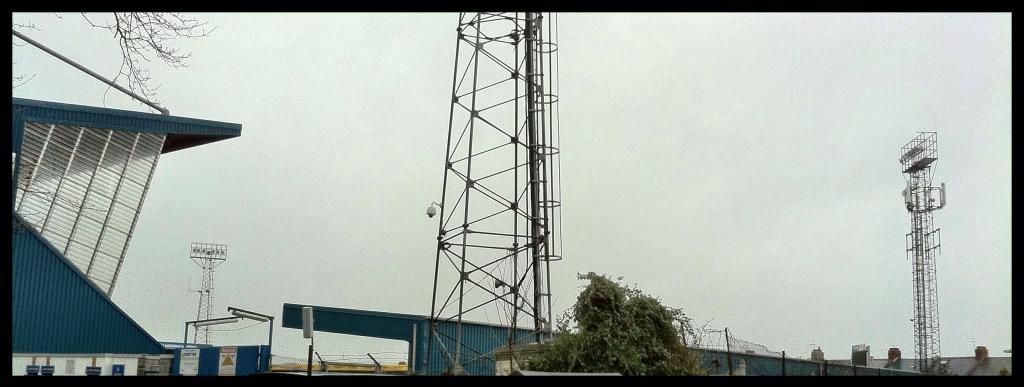 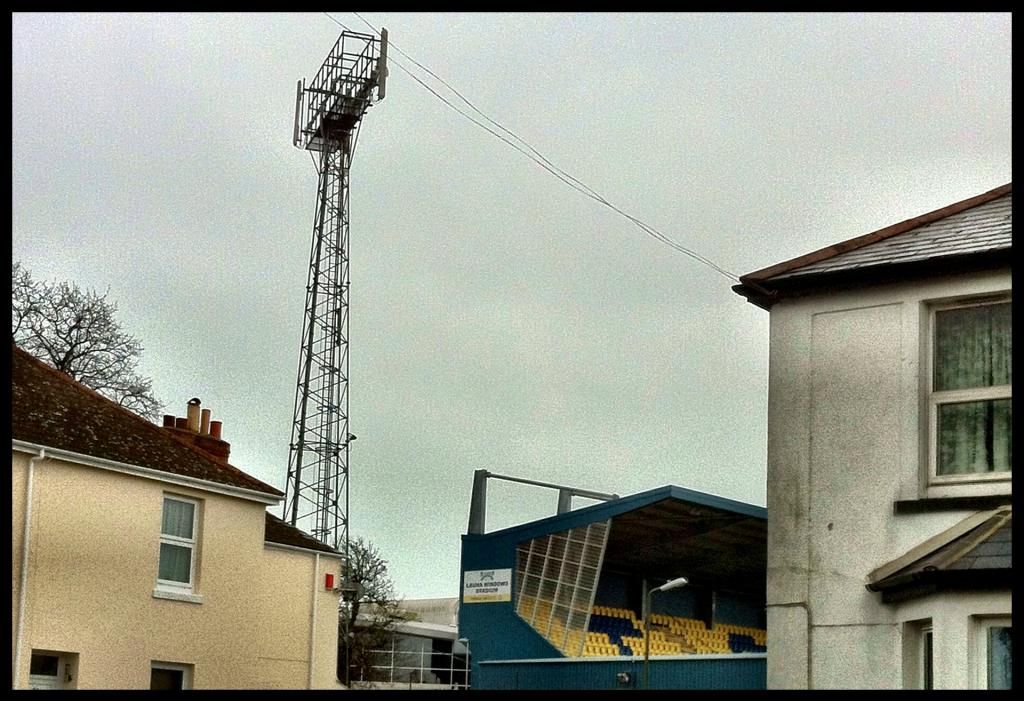 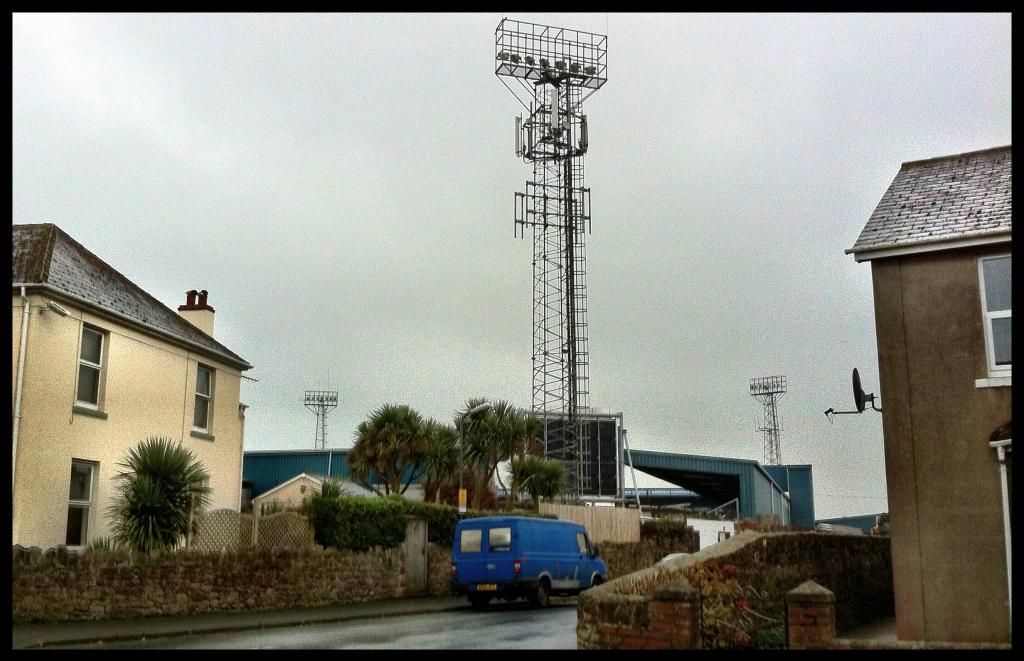 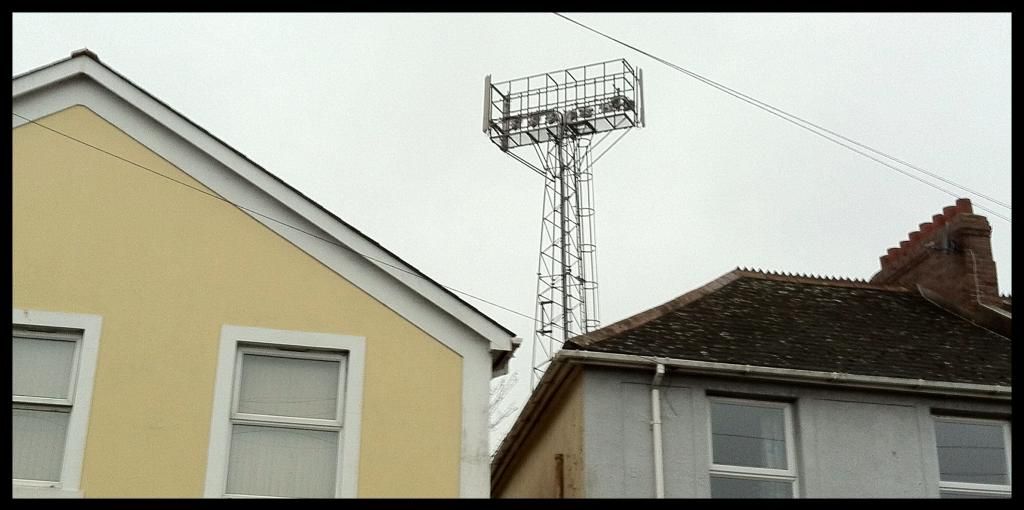 |
|
Deleted
Deleted Member
Posts: 0
|
Post by Deleted on Dec 10, 2014 12:41:10 GMT
In many respects Plainmoor is an unusual football ground. It's relatively high; its' altitude is above that of many senior football grounds. It's also rather maritime. There are grounds closer to the sea but few are effectively surrounded by it on three sides. When the wind blows - as we saw against Halifax – it positively swirls. Scenic beauty is close on hand too; Plainmoor liess within level walking distance of Babbacombe Downs, the country's highest cliff-top promenade (or so it is claimed). Yet in other respects Plainmoor is typical of many professional football grounds with its streets of hundred-year-old terraced houses, busy main roads, parades of shops, takeaways and pubs on corners. The aspect of the Plainmoor ground where this is most keenly felt is Marnham Road. And, as we've discussed recently, this is where the permanent establishment of a football ground in 1910 effectively delineated the extent of the district we have come to know as Plainmoor. In contrast to Warbro' Road, one whole side of Marnham Road has been transformed during my time as a Torquay United supporter. This, of course, is the "new" popular side which, I often forget, includes an indoor bowls club. This, I presume, makes it a facility which is used practically every day of the year. The basic history is of a structure that stood for forty years from the 1950s to the 1990s. If Plainmoor hadn't already possessed a "cowshed", I'm sure somebody would have coined a suitably agricultural description for the popular side structure. It wasn't a bad stand to be honest and pretty typical of its day. But it doesn't need too much a stretch of the imagination to visualise the club's directors selecting it from an agricultural buildings catalogue. Indeed, there must still be similar constructions on farms throughout Devon. It's been gone for twenty years now. It was sudden. I'm sure it was there for the regular season but merely an enormous void by the time we faced Preston North End in the play-offs. I've long taken the present scene for granted; my thoughts and vision concentrated on the turnstiles. Look closely and there are some interesting features remaining: the retaining wall; the solitary tree or bush. Also the "bits and pieces" surrounding the old turnstiles towards the Babbacombe end of Marnham Road. Just an exit these days. A patched up mixture of brick and stone work; lengths of cabling; the recent addition too of the electronic scoreboard and video display. You could call this Plainmoor's "scruffy corner". 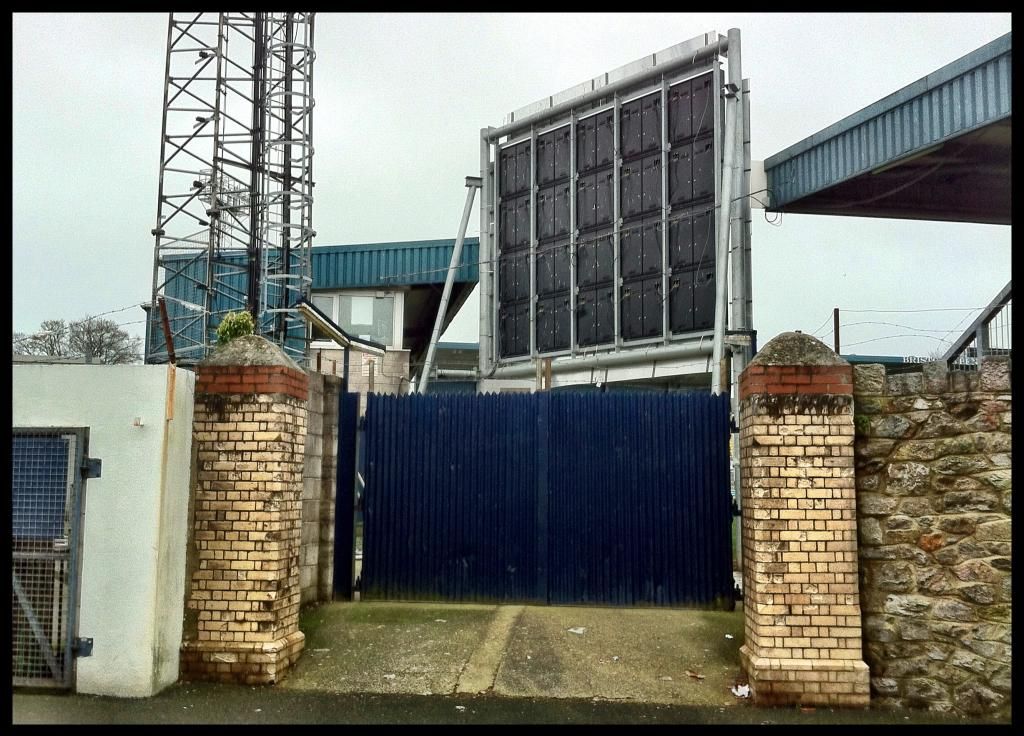 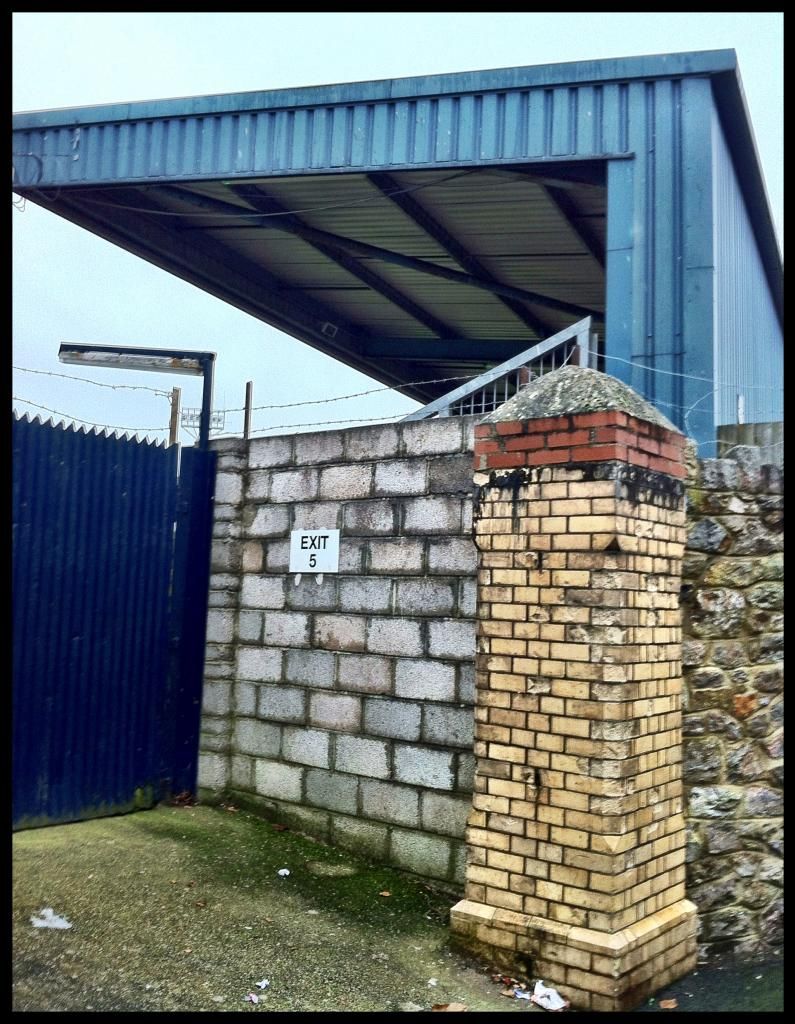 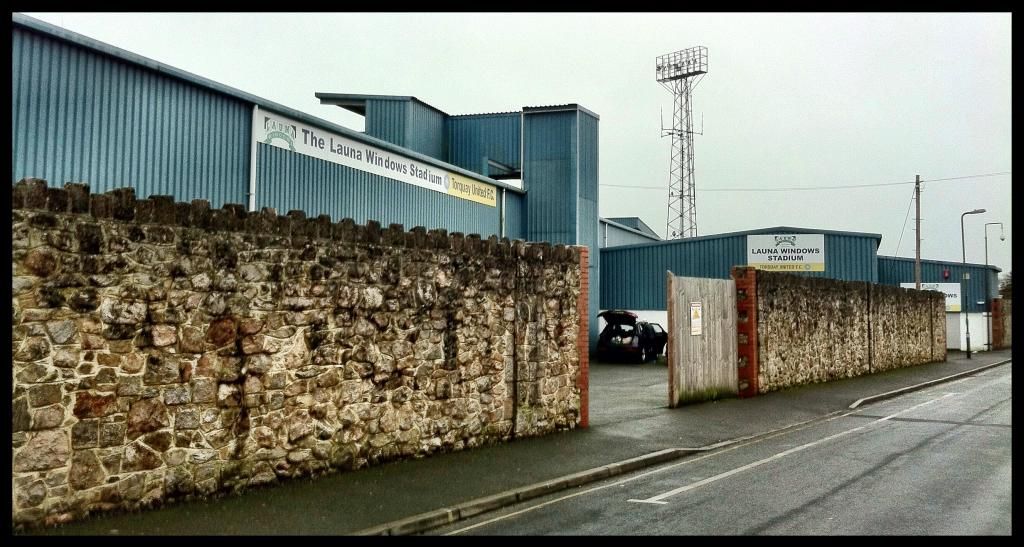 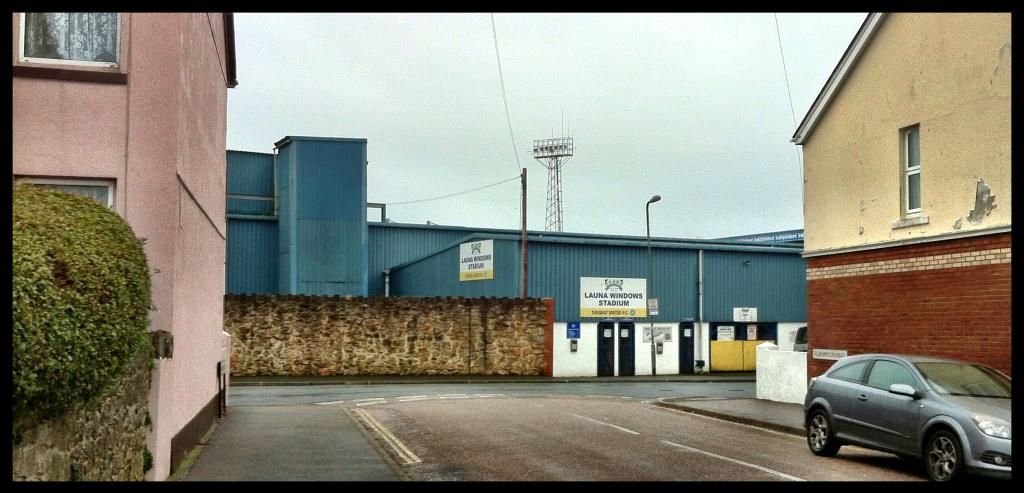 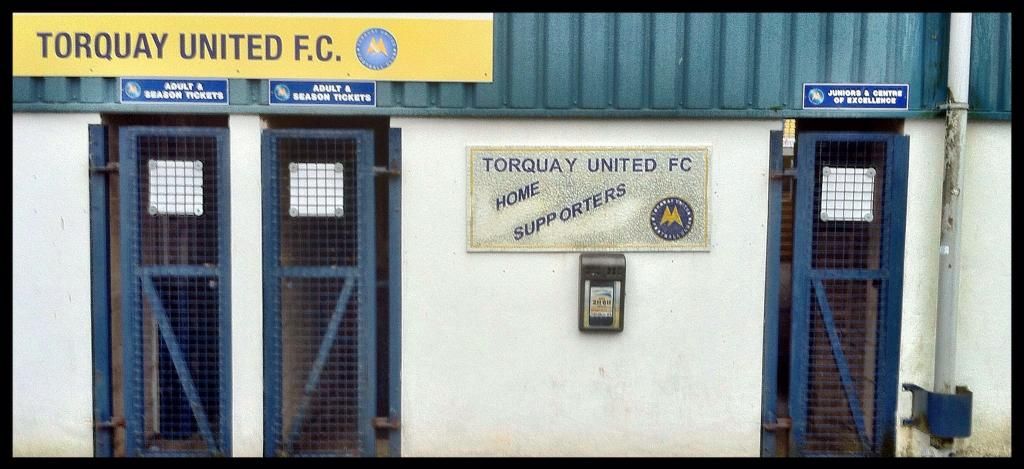 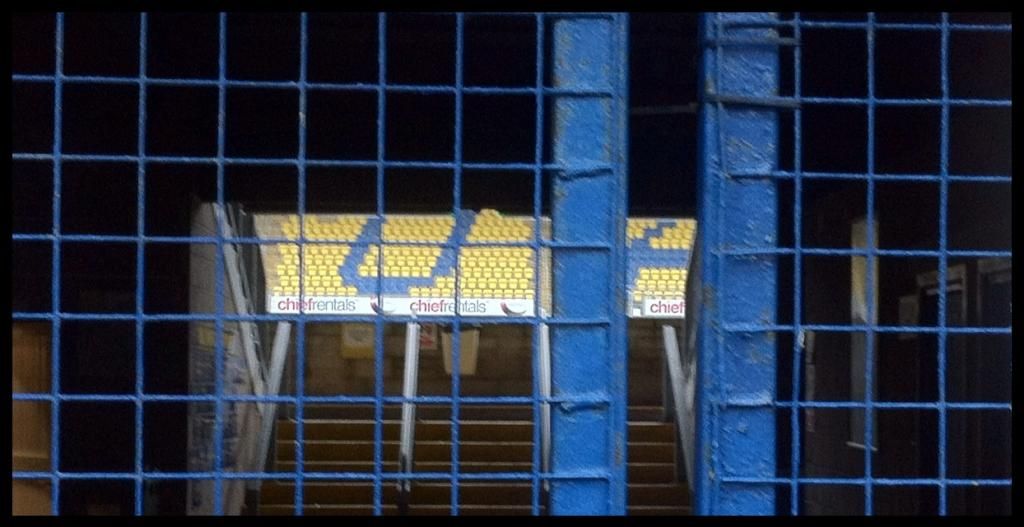 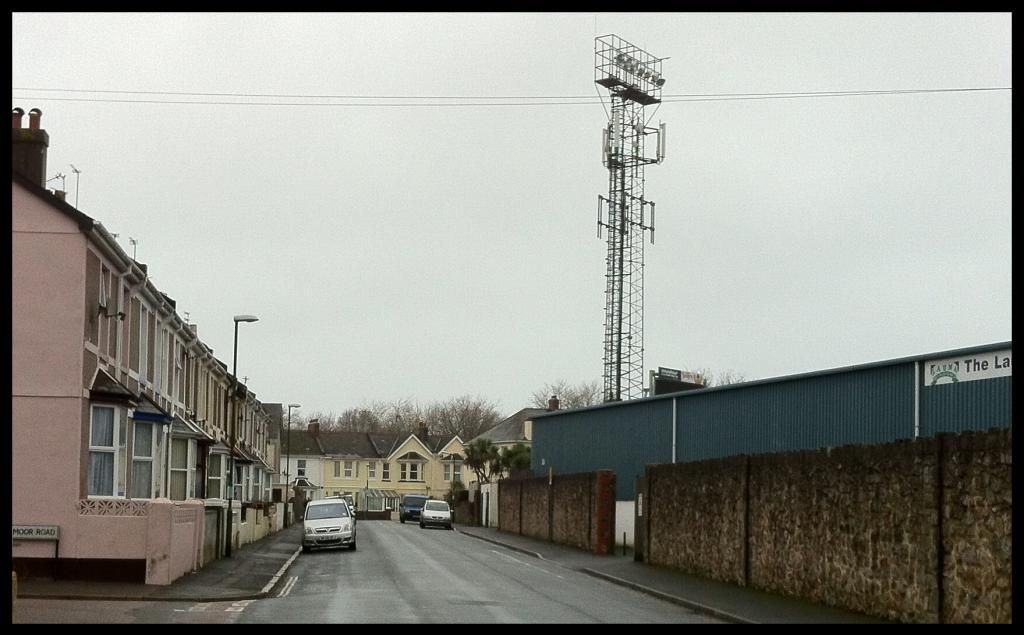  |
|
Deleted
Deleted Member
Posts: 0
|
Post by Deleted on Dec 10, 2014 12:48:28 GMT
It's all too easy to forget the transformation of the Ellacombe end took place only a couple of years before the rebuilding of the popular side. This must have been an enormous event at the time and - availability of grant aid notwithstanding - a real declaration of intent by United's new owner Mike Bateson. Putting the timescale together, commissioning and building would have taken place remarkably soon after Mike Bateson took control of the club. I can't remember the expectations back then: was a similar project ever mooted for the grandstand? Did we envisage a capacity of, say, 10,000 with substantial terracing along Marnham Road and at the Babbacombe end? In some people's eyes the Ellacomve End stand set a standard that was never matched in Mike Bateson's time. They remained disappointed as a result; certainly the actions of the subsequent seven or eight years consolidated Plainmoor's capacity at around 6,000. Yet the Ellacombe end stand was a notable achievement for the club and, years later, it's a sad fact the capacity of the ground has rarely been stretched. Plainmoor had to change and change it did. I do wish the popular side was bigger but I think we've discussed this previously and how a larger capacity would have impinged on the bowls club and Marnham Road in general. And, good grief, viewing it from the Bench against Halifax the popular side gathering appeared decidedly sparse. A series of pictures of behind the Ellacombe end over the years would be fascinating: the rear view of the "cowshed" (as, if I'm correct, featured in Football League Review); before the swimming pool and through its extensions and renovations (remember how its' initial construction was a considerable community achievement in its own right). All told it's certainly an aspect of Plainmoor which has witnessed considerable change right back to the days of the tin church. As for now, one or two pieces of detail I'd not previously noted. I'd never "lined up" the goalmouth with the football stands in the background. Nor had I paid much attention to the palm. The coach from Leeds was merely passing through; a sure sign a team from the West Riding was in town. 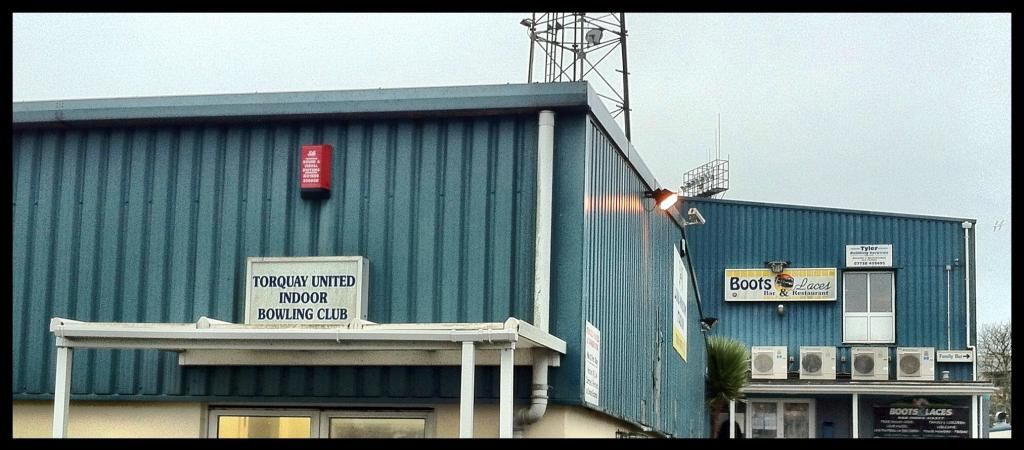  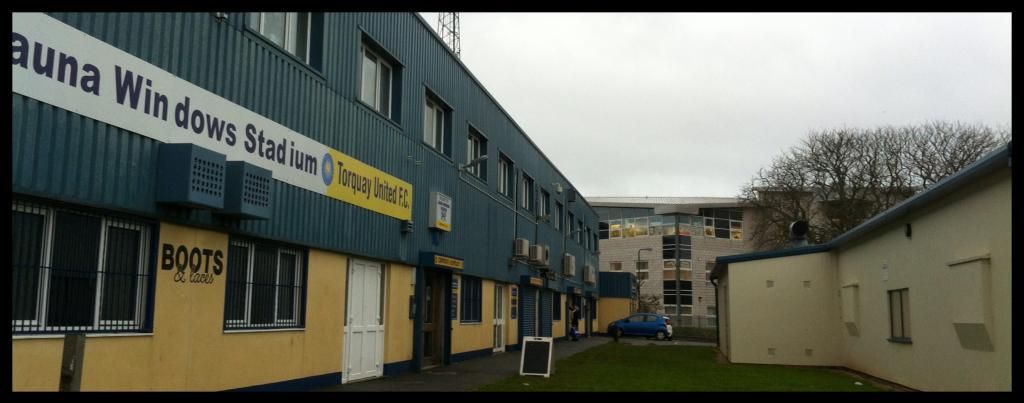 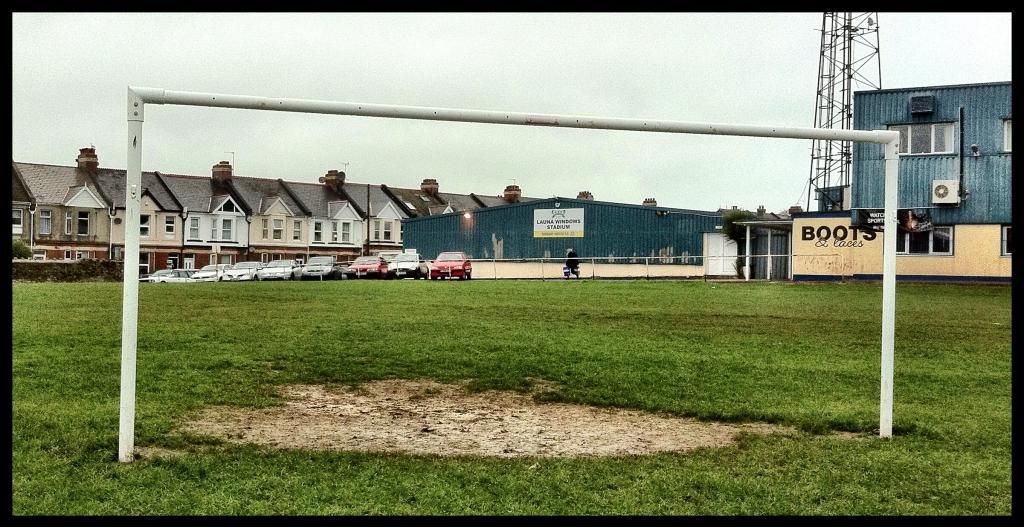 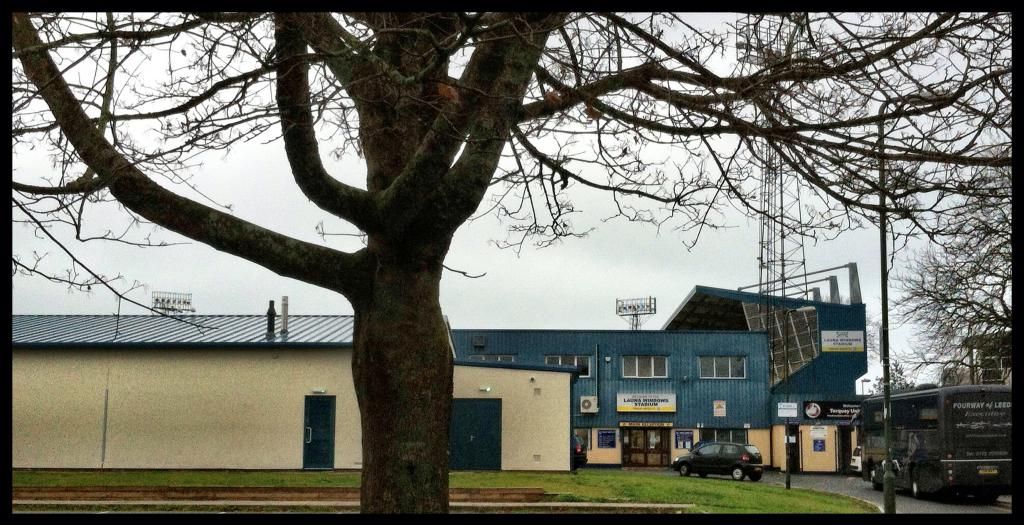  |
|
Deleted
Deleted Member
Posts: 0
|
Post by Deleted on Dec 10, 2014 12:53:18 GMT
|
|
Mr_W
TFF member
 Cripes, Bully gets everywhere! Neighhhhh....
Cripes, Bully gets everywhere! Neighhhhh....
Posts: 1,016 
|
Post by Mr_W on Dec 10, 2014 18:35:39 GMT
....truly superb, Nick - brilliant!!!!
|
|
Mr_W
TFF member
 Cripes, Bully gets everywhere! Neighhhhh....
Cripes, Bully gets everywhere! Neighhhhh....
Posts: 1,016 
|
Post by Mr_W on Dec 10, 2014 18:59:00 GMT
...don't know if you've ever seen this from Youtube Nick - contains some footage of the old Babbacombe end amongst other stuff.........
rgds mate! - Mr_W
|
|
Deleted
Deleted Member
Posts: 0
|
Post by Deleted on Dec 10, 2014 22:46:18 GMT
...don't know if you've ever seen this from Youtube Nick - contains some footage of the old Babbacombe end amongst other stuff......... Every time I see this film I expect Alan Merson, looking all rather suave, to emerge from the promotions office. The shallowness of the Babbacombe End is very apparent. And, yes, the caravan in the corner. Did somebody live in it perhaps? An honest historical analysis would say the ground was "rundown" in those days. At the very least. Or is it the quality of the film and sorrowfulness of the music that makes it feel that way? |
|
Jon
Admin 
Posts: 6,912
|
Post by Jon on Dec 11, 2014 22:45:58 GMT
That video is brilliant. This is the Plainmoor I fell in love with all those years ago. If it looks a little "tired" here, it was in a far far worse state ten years later. |
|
Deleted
Deleted Member
Posts: 0
|
Post by Deleted on Dec 12, 2014 15:37:56 GMT
That video is brilliant. This is the Plainmoor I fell in love with all those years ago. If it looks a little "tired" here, it was in a far far worse state ten years later. Yes you are right about the difference between the Plainmoor of 1980 and that of, say, the late 1980s. That was the scene of decay and hopelessness to which I returned after watching most of my football elsewhere between 1974 and 1988. Thankfully Cyril Knowles was manager at the time and brightened the place immensely. I'm struck by Jon's phrase "this is the Plainmoor I fell in love with all those years ago". Gosh, did I ever feel quite like that? I don't think so. I was probably more interested in "football" than Torquay United in particular; as a child I relished my holiday trips to the big London grounds rather more than any outing along Warbro' Road. Indeed, if it's the time for confessions, I probably secretly bemoaned the fact I grew up in a town with such a "crap" team (as would have been my preferred description at the time). But I tolerated Torquay United as part of a wider interest and somehow, rather against the odds, stuck with them. I guess, however, that I needed to leave Torquay (initially at the age of eighteen) for any feelings of "connection" to be triggered. Nostalgic about the old Plainmoor? No. Greatly interested in its' history? Yes. I just wish I'd possessed a greater air of wonderment at the time and had paid more attention to scenes and events around me. A definite change occurred when I grew to appreciate growing up in a town with such a significant football club as Torquay United (yes, you've read that correctly). That made me think differently and that's how, on reflection, Torquay United started to cement a place at the centre of my interest in football with other aspects fitting in neatly around it. |
|
|
|
Post by fleurette on Dec 13, 2014 10:40:21 GMT
These are really good pictures! Shame I can't use all of them....limited by time and space....however, does anyone know when Marnham Road had its name changed from Broadmead Road? It was in honour of Mayor Francis Marnham and would have been around the time Torquay first entered the League, so I'm thinking the name change would have been around 1927?
|
|
hector
TFF member

Posts: 1,311
|
Post by hector on Dec 30, 2014 10:53:54 GMT
QuotelikePost Options Post by rjdgull on Nov 30, 2014 at 8:52pm
Jon Avatar
Nov 30, 2014 at 4:58pm Jon said:
rjdgull Avatar
Nov 29, 2014 at 9:24am rjdgull said:
Parkhurst Road however is mainly 1920s built so not sure why that land wasn't available prior to the move back to Plainmoor?
Looking at the map again, the houses built in 1906 or shortly after would have been on Cricketfield Road itself - between the junction with Parkhurst Road and the junction with Barton Road.
Are those houses Edwardian?
Had a look on street view, the semis either side of Parkhurst Road with the single storey bay, to be fair, do look Edwardian. Will see if I confirm that....
Apologies, I messed up the quoting...
My parents live in Parkhurst Road and we were always under the impression the houses in that road were built by Lloyds Builders in the 1930s. Certainly at the top end, at least, as the houses in that road are not all standard semis - there is a hotpotch of different styles as you walk from the St Vincents Road end to Cricketfield Road, as the road slopes downwards.
|
|
hector
TFF member

Posts: 1,311
|
Post by hector on Dec 30, 2014 18:07:19 GMT
That video is brilliant. This is the Plainmoor I fell in love with all those years ago. If it looks a little "tired" here, it was in a far far worse state ten years later. Likewise, that first flush of love was that exact ground for me as my first regular season was 79/80. I can still almost remember the smell of the place at that time. Despite being a completely different ground, in terms of buildings that adorn it, Plainmoor very much feels the same - a bit like Trigger's broom. As for the Homelands/Westlands, at the time of the whole rebuilding aspect of it, there was the old Homelands Infant School and Westlands Upper School - the Westlands Lower School was sited where the current Homelands Primary School is. I think there was some PFI(?) money that saw Homelands Infant School move from it's old position behind the Grandstand and take over some of the old Westlands buildings for a while, as it's new buildings were being completed, with the school taking 4 years to move from Infant only to a full primary school, and the same money transforming a split-site Westlands into the whole-school site it is today. |
|
|
|
Post by gullone on Jun 7, 2015 16:09:06 GMT
Its May 1992 and the old mini-stand and terrace behind the goal is demolished...  |
|
Jon
Admin 
Posts: 6,912
|
Post by Jon on Jun 8, 2015 22:44:29 GMT
Its May 1992 and the old mini-stand and terrace behind the goal is demolished... What great pictures! |
|


















